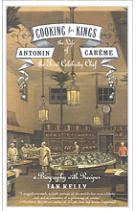 Today our guest is Miranda Neville who offers us a tasty new Regency treat in Never Resist Temptation. Miranda originally hails from the UK but now lives and writes in Vermont. Her Avon debut promises to whet our appetites for more! Please give Miranda a delicious Risky welcome and one lucky commenter, chosen at random, will win an autographed copy of Never Resist Temptation.
Today our guest is Miranda Neville who offers us a tasty new Regency treat in Never Resist Temptation. Miranda originally hails from the UK but now lives and writes in Vermont. Her Avon debut promises to whet our appetites for more! Please give Miranda a delicious Risky welcome and one lucky commenter, chosen at random, will win an autographed copy of Never Resist Temptation.
 1. This is your debut novel! Tell us about your book.
1. This is your debut novel! Tell us about your book.
First, thank you so much for inviting me to visit the Riskies. A copy of Never Resist Temptation will go to one commenter.
Never Resist Temptation starts with that old romance staple—one I never get tired of—the heroine who is lost at cards by her wicked uncle. Jacobin, being a feisty lady, runs away and goes to work as a pastry cook at the Brighton Pavilion. Then her uncle is poisoned by a dessert she made and she’s on the run again. The good news is she’s been offered another job; the bad that her new employer is the winner of that card game. Anthony, the Earl of Storrington, has his own reasons for employing a pastry chef. He’s unaware of her true identity but things soon heat up between them.
“…genuine, lusty and fun.” Publisher’s Weekly
“…a delicious and delightful read.” Romantic Times 4 Stars
“I adored Never Resist Temptation.” Michelle Buonfiglio’s Romance B(u)y The Book
“Don’t resist the temptation – pick up the book!” Romance Novel TV
…
2. We love to hear about a new author’s journey to publication. Tell us about yours and include your “The Call” story!
I went into this as clueless as anyone. I’d always had the yen to write an historical romance so I did. Once I joined the RWA and tried to sell the book I discovered all the things that were wrong, like 10,000 words of backstory in the first three chapters. I did get some encouraging words on my writing from agents, editors and contest judges, but I gradually realized even the slimmed down version was unlikely to sell: it was too “traditional Regency.” I abandoned it, along with its half finished sequel, and spent a weekend thinking about a plot and characters that worked in what I’d learned about the current romance market.
I can’t really describe how the story evolved but it really came together. The first draft took six months and I enjoyed (almost) every moment. Then I went the usual route: appointments at conferences, contests, agent queries, and garnered my fair share of rejections. Once I won a contest and had an editor request the full, I began to get some interest from agents. Meredith Bernstein (what a great woman!) took me on and sold the book in three weeks. She called me one morning to say a couple of publishers had turned me down, then the same afternoon to relay an offer from Avon (thank you, most wonderful Lucia Macro). I went from wild despair to swilling champagne in a matter of hours.
2. Who can’t love a book that includes pastries? Tell us something about your research for the book, especially the cooking part.
Reading Ian Kelley’s biography of the great French chef Antonin Carême was the catalyst for the story. I wanted to incorporate his tenure as the Prince Regent’s chef. I was intrigued that female cooks were much more prevalent in England than on the continent. Carême didn’t like employing women as cooks and didn’t appreciate the female cooks who worked for Prinny. This gave me the idea of having Jacobin disguised as a young man. Cross-dressing roles are such fun, and Anthony is very confused by his initial attraction when he thinks she’s a boy. Most of the recipes described (and in some cases quoted) in the book come from Carême’s cookbooks. I tracked down details about period kitchens, stoves, utensils and so forth, though much of it never made it into the story.
4. We’re all about being risky here. What was risky about your book?
Hmm. I like to use a lot of humor, even in the sex scenes. Is that risky? And talking of risk, I am always aware of the chance of conception and I think the intelligent hero and heroine should be too. I like to see sex followed by pregnancy or fear of pregnancy, or use of some preventive measure. The rather crude forms of contraception available back then are perhaps given too much credence in romances, but that’s OK. I was nervous having my 88-year-old father read the book but he took it very well (of course, he thinks his daughter deserves a Pulitzer). We had an interesting discussion about coitus interruptus!
5. What is it about the Regency era that drew you to it?
My favorite historical eras have two things in common: great power and great clothes. The Regency saw Britain established as Top Country and its aristocrats wielded enormous influence. Masters of the Universe in fabulous costumes (yes, I loved Colin Firth in the wet shirt).
6. What’s next for you?
I’m contracted for two more books at Avon. The series (hopefully eventually a trilogy) is set in the world of Regency book collectors. Bibliophilia is a strange obsession, inspiring rivalries, murderous skullduggery and (a fact sadly absent from the historical record) sexual passion! I worked in Sotheby’s rare books department for several years so I’m returning to my roots here.
Miranda will be stopping by so feel free to ask her questions about Never Resist Temptation, French cooking, or working in Sotheby’s rare books department. And remember. One lucky commenter will win an autographed copy of Never Resist Temptation.
The Regency period wasn’t a big one for elaborate birthday celebrations, though there might be a special meal and small gifts of books and embroidered handkerchiefs and things like that, but even then people did like their cake. They probably didn’t have one like mine (which was this “Princess and the Frog” model), so I went to consult my bookshelves to see what they might have had. I pulled out Ian Kelly’s fascinating book, Cooking for Kings: The Life of Antonin Careme, First Celebrity Chef.
What is your favorite kind of cake? What would you choose for your birthday if you lived in the Regency? (And I love this Brighton Pavilion-shaped cake…)






